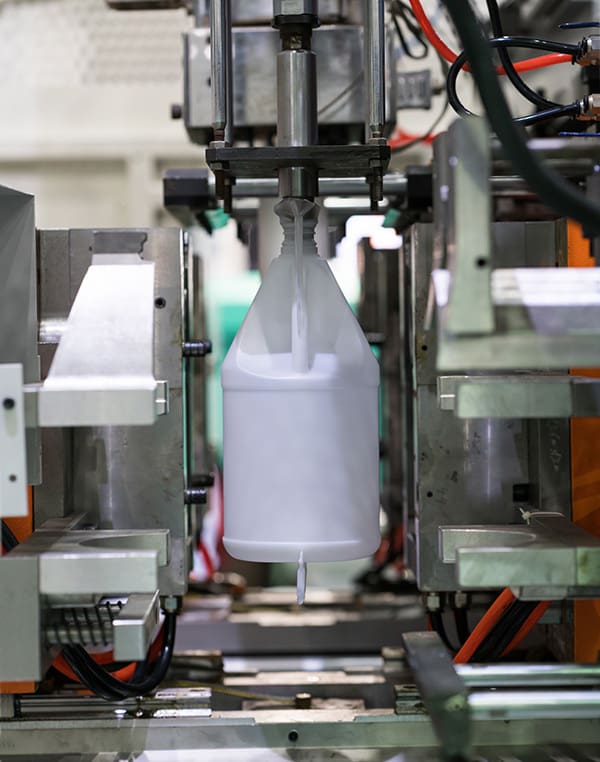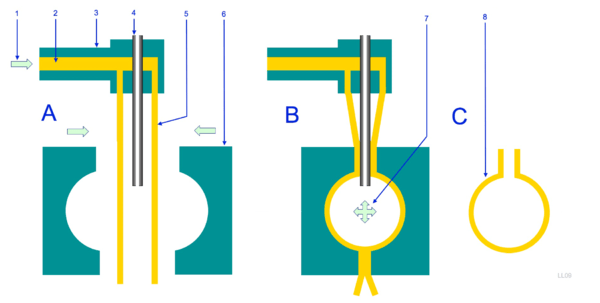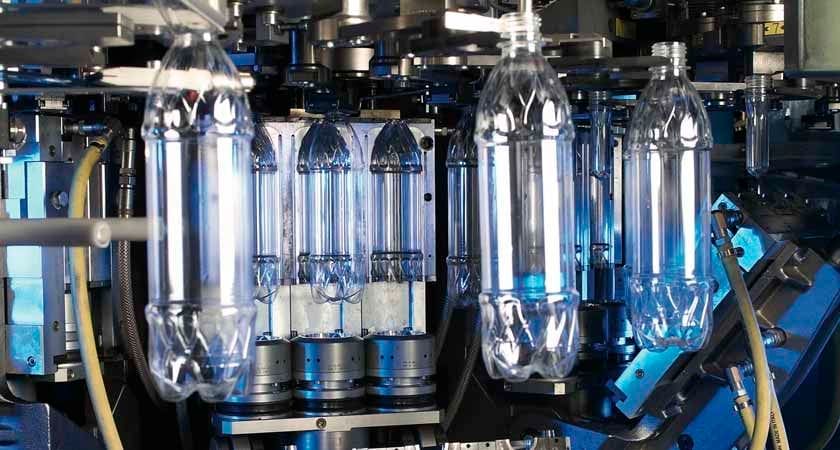What Is It?

Blow molding is a plastics manufacturing process used mainly to manufacture hollow parts and products from a wide range of thermoplastics.
The process is named the way it is because it involves blowing air into molten plastic almost like a balloon until it fills the cavity of a mold tool. There are three main types: extrusion, injection, and injection stretch.
All input materials are thermoplastics, and many are similar to those used in injection molding, such as POM, ABS, polystyrene, and polycarbonate among others.
The Process

The blow molding process has been around for thousands of years and remains essentially unchanged. The main difference with the modern process is that it’s heavily automated. The general process for extrusion blow molding is as follows:
- The plastic material is shaped into a parison, a tube with a hole only on one end.
- The parison is then clamped to the inside of the mold.
- Air is blown into the heated parison.
- The plastic expands like a balloon and covers the inside surface of the mold.
- The plastic cools, the mold is opened, and the part is ejected.
In the case of injection and injection stretch blow molding, the parison is replaced with a preform, which is produced through injection molding. The associated tools are often made from aluminum or steel and are great for thousands of parts.
Advantages and Disadvantages

Naturally, not all plastic products are suited for blow molding. Here’s where the process shines and fails.
Pros
- Pressures are much lower than with injection molding, so the tooling is generally cheaper to manufacture.
- It’s great for parts with external threads.
- It produces parts that would be difficult to make via injection molding.
Cons
- Part geometry is limited and restricted to simple forms.
- Parts are generally more expensive than with injection molding.
Application Areas

Blow molding is used to manufacture many different types of products, such as ducting for automotive, plastic bottles, food containers, and even things as large as garbage bins.
So how do you evaluate if your part is suitable for this process? If it’s hollow, has thin walls, or is an enclosed shape with undercuts — with which injection molding would struggle — blow molding might be the answer.
Blow Molding Companies

If you have something you think might be a good fit for blow molding, try one of these companies:
- Gemini Prototyping in the UK. They specialize in everything from “micro” up to large (10 liters) and offer both extrusion blow molding and co-extrusion, which allows you to combine different materials
- Maxtech in China is a blow molding specialist. The Chinese market is known for its high volume production, and this company is able to mold in a number of different materials. They also offer a number of complementary services.
- Shape Point is a US-based company with Chinese manufacturing. They manufacture blow-molded parts for a number of industries and applications.